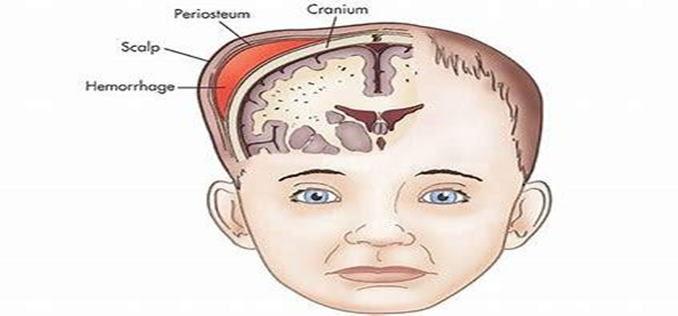The nurse is performing a newborn assessment and evaluates a collection of blood beneath the newborn's scalp that does not cross the suture lines. The nurse documents this finding as
Sinciput
Occiput posterior
Caput succedaneum
Cephalohematoma
The Correct Answer is D
D. Cephalohematoma is another condition seen in newborns involving the collection of blood beneath the periosteum of the infant's skull bones. Unlike caput succedaneum, cephalohematoma does not cross suture lines because it is confined by the edges of a single cranial bone.

A. Sinciput refers to the anterior part of the fetal skull. It is not a term used to describe any specific condition or abnormality of the newborn scalp.
B. Occiput posterior refers to the position of the baby's head during labor and delivery, where the back of the baby's head (occiput) is towards the mother's posterior pelvis. It does not describe a scalp condition.
C. Caput succedaneum is a common condition in newborns characterized by swelling or edema of the scalp that crosses suture lines. It typically occurs due to pressure against the mother's cervix or vaginal wall during labor. The swelling is fluid collection beneath the scalp skin and often resolves within a few days without treatment.
Nursing Test Bank
Naxlex Comprehensive Predictor Exams
Related Questions
Correct Answer is ["7"]
Explanation
Volume= Desired dose/ available concentration in 1ml Available concentration per ml= 250mg/5ml= 50mg per ml Volume= 350mg/50mg per ml= 7ml
Therefore, the nurse should administer 7ml of amoxicillin
Correct Answer is C
Explanation
C. This maneuver is often the initial nursing intervention for late decelerations. Placing the client in the lateral position (preferably left lateral tilt) improves maternal perfusion and blood flow to the placenta by reducing compression of the inferior vena cava and increasing uterine perfusion. This can help alleviate or reduce the severity of late decelerations.

A. While maintaining adequate hydration and perfusion is important, increasing the IV infusion rate alone may not immediately address the underlying cause of late decelerations, which is uteroplacental insufficiency.
B. Not the first action. Elevating the client's legs can improve venous return to the heart and increase cardiac output in the mother, but it does not directly address fetal oxygenation. It's not typically the first intervention for late decelerations.
D. While oxygen administration is important for improving fetal oxygenation in cases of late decelerations, it typically follows positioning changes. Oxygen helps increase oxygen delivery to the fetus by increasing maternal oxygen saturation, but it is not as immediately effective as repositioning the mother.
Whether you are a student looking to ace your exams or a practicing nurse seeking to enhance your expertise , our nursing education contents will empower you with the confidence and competence to make a difference in the lives of patients and become a respected leader in the healthcare field.
Visit Naxlex, invest in your future and unlock endless possibilities with our unparalleled nursing education contents today
Report Wrong Answer on the Current Question
Do you disagree with the answer? If yes, what is your expected answer? Explain.
Kindly be descriptive with the issue you are facing.
